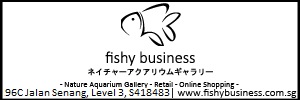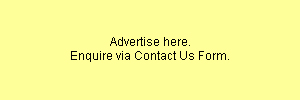I found that using a 100 ppm mix of r/o and tapwater, then adding HCl additions until it is reduced to pH to around 6 or 6.5, after a day of aging, works best for me. I've tried many parameters from straight r/o (at most 10 ppm ) to this present setting. Around 80 degrees is fine after initial quarantine.
For "acclimation" I have also had them in tapwater; after it runs through carbon filter from r/o unit to dechlor it, then I lowered the pH using acid, and aged it for a day while using a powerhead in the holding container, re checked and adjust pH, then added to tank. I changed the parameters to 100 ppm over a two week period through daily water changes of over 100 %, using several small changes . Bucket out and bucket in as often as you have time. IN a small tank, maybe just a milk jug for many small changes. This again is why it is much safer to know your chlorine situation. With constantly new water, if you overdose the fish with dechlor, I think you can lose them from bad oxygenation and then infection.
Personally, I think it is safer to NOT use chemicals, but rather use small additions of water straight from the tap. For a 20 gal tank, you could change water with a little jug (for holding bags of milk ) pretty safely I think, even just one jug several times a day. Say a max of 20 % total, over the day. That way even chloramine gets used up to oxidate organic materials before the next small WC comes in. All this caution about chlorine is because I think so many members have the perception of unusual tapwater locally at times. Otherwise, municipal water is usually not so dangerous as long as it's a slow addition.
I understand is some parts the water smells of chlorine. Perhaps check this type of water and several other times and see what a max of chlorine reads from your municipal supply, or enquire at your municipal water supply company to see if there are widely varying chlorine/chloramine additions due to weather incidents and so on.
This all may seem like a lot of work, but it seems like less work to me, in the end.
For instance, "do you have chlorine or chloramine, or maybe even switching due to incidents", is a basic type of information that can help you figure out what is safest and easiest. Sometimes if they work on a local pipe, you get a surge of chlorine, I think.
So if I lived where there is this type of inconsistency I would make some small effort to find out this stuff.
When running a tank with no active biofilter I always change water very often. This continues until the fish are "in the clear", a good week or so.Then you can add biofilter muck or a live filter from another tank. Or put them in the other tank if that's what your intentions are. Again, acclimate for TDS difference.
I had the acclimation tank set like that because the importer uses tapwater of similar TDS. So could I could just net the fish out and put them in the tank as soon as the bag was opened. I don't care about pH acclimation at all, not one bit, except as it makes ammonia more toxic in form at higher pH.
So I like to keep pH below 7 at all times. Even filter troubles don't result n dead fish that way. So often a new tank may have filter problems, that's what I think, anyway ! Old tanks too ( maybe old brains involved !) . I've had my filters not work at times ..once from peat, several times from not plugging in the filter after working on the tank, and so on.
regarding acclimation, in the sense of what you do in the first two hours of having them in your hands, my feelnigs are this: don't do it.
my suggestion.
set a sterile quarantine tank with one day old , chemically or carbon dechlorinated water to a temp that we can discuss, allowing accomodation between your home location temperatures and expected temperature of incoming fish bag and other factors.
If you must use straight tapwater , if you can get an accurate chlorine test done at LFS or at home, then pour in your tapwater and use only enough dehlor chemical to neutralize the chlorine/chloramine that is better than dosing incorrectly.
I think HCl as sold by the name Muriatic Acid is best for lowering pH, and I would not use buffers and regulators and so on to lower pH.
If you know your tapwater parameters, then it's easier to advise on this. For instance, if someone has extremely hard well water on tap it may take a different approach than for someone who has soft water. For extremely hard, alkaline water, I would never use chemical mixes to adjust pH. NOPE. Something else has to be done. In that case, where nothing is easy, then do not adjust pH. Instead, use a functioning live biofilter staight away, transferred to the clean water quarantine tank just before addition of altums, and do not adjst pH.
Please do not attempt to use Acid without ABSOLUTELY following safety directions on handling it, or you will get burned ! Better to get a plumber to dilute the muriatic for you into a big jug of water.
Never add water to acid !
Use very good circulation and surface agitation, as can be achieved through spray bar or sponge filters and lift tubes with good air power driving them, or a sponge filter with small powerhead making a fountain, that kind of thing. Do not overpower the fish with current though. Perhaps even give them shelter spots from current.
If the fish are new imports, then I would use 90 degrees for a week, and depending on the temp they arrive at your home at, there are a couple of ways to get them to 90, which we can discuss about your own situation.
Hopefully this gives you ideas of some of what is possible for you, and if you give more particulars on your tapwater parameters and chlorination, and room temperature and so on, , we can solve the puzzle better. Or if you are putting them straight into a community tank without quarantine, we can discuss that too.
Dave










 Reply With Quote
Reply With Quote
 .
.
Bookmarks